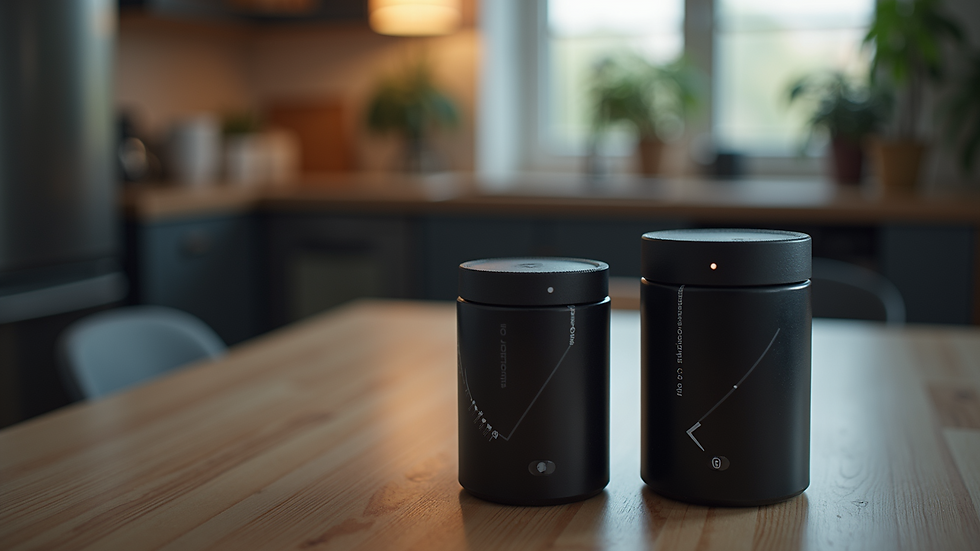Radon Testing for Real Estate Transactions Explained
- Frank Talarico
- Oct 20
- 4 min read
When buying or selling a home, many factors come into play to ensure a smooth transaction. One important but often overlooked aspect is radon testing. Radon is a naturally occurring radioactive gas that can seep into homes through cracks and openings in the foundation. It is colorless, odorless, and tasteless, making it impossible to detect without proper testing. Understanding radon testing in real estate is crucial for protecting health and making informed decisions during property transactions.
Understanding Radon Testing in Real Estate
Radon testing in real estate is a process used to measure the levels of radon gas inside a home. Since radon exposure is linked to lung cancer, the Environmental Protection Agency (EPA) recommends testing all homes below the action level of 4 picocuries per liter (pCi/L). Testing is especially important during real estate transactions because it can affect the value and safety of the property.
There are two main types of radon tests used in real estate:
Short-term tests: These last from 2 to 7 days and provide quick results. They are commonly used during home inspections.
Long-term tests: These last more than 90 days and give a more accurate average radon level over time.
Professional radon testers use specialized equipment to ensure accurate readings. Testing should be done in the lowest livable area of the home, such as the basement or first floor.

Why Radon Testing Matters in Real Estate Transactions
Radon testing for real estate transactions is essential because it protects buyers and sellers from potential health risks and financial surprises. If high radon levels are found, mitigation systems can be installed to reduce radon concentrations. This can be a negotiation point during the sale, affecting the price or terms of the deal.
For sellers, having a radon test report ready can speed up the transaction and build trust with buyers. For buyers, it ensures the home is safe and helps avoid costly repairs after purchase.
Is it Hard to Sell a House with Radon?
Selling a house with radon can present challenges, but it is not impossible. Many buyers are aware of radon risks and may request testing or mitigation before closing. Here are some key points to consider:
Disclosure: Sellers are often required by law to disclose known radon issues. Transparency helps avoid legal problems later.
Mitigation: Installing a radon mitigation system can lower radon levels significantly. This investment can make the home more attractive to buyers.
Negotiation: Radon issues can be a bargaining tool. Sellers might offer to cover mitigation costs or reduce the price.
Market Impact: In areas known for high radon levels, buyers expect testing and mitigation. Homes without these may be harder to sell.
Overall, addressing radon proactively can prevent delays and increase buyer confidence.

How to Perform Radon Testing During a Real Estate Transaction
Performing radon testing during a real estate transaction involves several steps to ensure accuracy and compliance:
Hire a Certified Radon Tester: Choose a professional with proper certification and experience in residential radon testing.
Select the Test Type: Decide between short-term or long-term testing based on the transaction timeline.
Prepare the Home: Close all windows and doors for at least 12 hours before and during the test to prevent outside air from affecting results.
Place the Test Device: The tester will place the device in the lowest livable area, away from drafts, high humidity, and direct sunlight.
Conduct the Test: Leave the device undisturbed for the required period.
Analyze Results: The tester sends the device to a lab or uses electronic monitors to get results.
Report Findings: A detailed report is provided to the buyer and seller, including recommendations if radon levels are high.
Following these steps ensures reliable results that can be used confidently in negotiations.
Radon Mitigation Options and Costs
If radon testing reveals elevated levels, mitigation is the next step. Radon mitigation systems reduce radon gas by venting it outside before it enters the home. Common mitigation methods include:
Sub-slab depressurization: A pipe and fan system installed beneath the foundation to draw radon out.
Crawl space ventilation: Increasing airflow in crawl spaces to reduce radon buildup.
Sealing cracks: Closing foundation cracks to limit radon entry (used alongside other methods).
The cost of radon mitigation varies depending on the home size and system complexity but typically ranges from $800 to $2,500. Investing in mitigation improves indoor air quality and can increase property value.

Protecting Your Investment with Radon Testing
Radon testing is a smart step in any real estate transaction. It protects health, prevents unexpected expenses, and supports transparent negotiations. Whether buying or selling, consider the following recommendations:
Always request or provide a radon test report during the transaction.
Use certified professionals for testing and mitigation.
Understand local radon risks and regulations.
Factor radon testing and mitigation costs into your budget.
Keep documentation of all radon-related inspections and repairs.
By prioritizing radon testing, you safeguard your investment and ensure a safer living environment.
For more information or to schedule a professional test, visit radon testing for real estate transactions.
Taking radon seriously during real estate transactions is a proactive way to protect health and property value. With proper testing and mitigation, radon does not have to be a barrier to buying or selling a home.



Comments